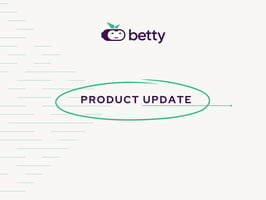Associations have long been the stewards of industry knowledge. From curating research to bringing...
We are in an AI chasm, and what happens next decides whether associations unlock a generational upgrade or whether the entire category slips into disillusionment.
 That might sound dramatic, but it’s the reality I’m seeing play out every day. The tone around AI has shifted. The hype is gone. The razzle dazzle is gone. People aren’t impressed by what AI can do anymore. They want to know what AI will do for them in the real world. And honestly, that’s exactly the moment described in one of the most important books in technology: Crossing the Chasm by Geoffrey Moore.
That might sound dramatic, but it’s the reality I’m seeing play out every day. The tone around AI has shifted. The hype is gone. The razzle dazzle is gone. People aren’t impressed by what AI can do anymore. They want to know what AI will do for them in the real world. And honestly, that’s exactly the moment described in one of the most important books in technology: Crossing the Chasm by Geoffrey Moore.
If you haven’t read it, the basic idea is pretty straightforward. New technology moves through a set of stages. First you have the innovators, the people who love new things just because they’re new. Then you have the early adopters, the people who see potential and are willing to experiment. After that comes the early majority, and this is where things get tricky. Innovators and early adopters are comfortable with risk. The early majority is not. They don’t buy potential. They buy proof. And the gap between those mindsets is what Moore calls the chasm.
Most technologies never make it across.
And right now, AI in associations is standing right on the edge of that gap.
AI has the potential to be a generational upgrade for associations. I really believe that. It can help associations work faster, understand their members more deeply, surface knowledge more effectively, and create new value from content they already have. But none of that becomes real unless AI crosses this chasm. And the only way it crosses is if we take the early majority seriously and build for their mindset instead of the mindset of the past two years.
If you’re reading this, you’re probably part of that early majority. You’ve seen the hype. You’ve heard the promises. You’ve watched projects get over-sold and under-delivered. You’ve maybe dipped your toe in and walked away thinking, “Okay, that was interesting, but not quite ready.” But at the same time, you’ve also seen flashes of what’s possible. Enough to know that AI isn’t just another tech fad, and enough to want the promise to be real.
That tension you’re holding right now is exactly where the entire industry sits.
I’ve been working with associations on AI since before ChatGPT existed, and I’ve had a front-row seat through the innovator phase, the early adopter phase, and now this shift into early majority territory. So let me walk through how we got here, what this moment means, and what it’s going to take for associations to truly cross the chasm and capture the value waiting on the other side.
How We Got Here: Three Years Across the Adoption Curve
When ChatGPT launched, it catapulted us straight into the early adoption curve at full speed.
In the early days, we were talking to the innovators. These were the people who didn’t care about ROI or workflows or accuracy. They just wanted to be first. They wanted to experiment. They wanted to play. I did demos where people literally watched the text appear on the screen and that alone was enough to make them go silent. It didn’t matter what we built. The magic was the selling point.
Six to twelve months later, that shifted. We moved into the early adopter phase. These folks were still excited, but they were more grounded. They knew what LLMs were. They used phrases like “hallucinations” and “guardrails.” They wanted to run pilots. They wanted to see what was possible. A lot of spaghetti got thrown at a lot of walls during this time. Some of it stuck. A lot of it didn’t.
And then, slowly, the tone started to shift again.
That shift brings us to today, where the early majority is now the dominant voice in the room.
The Early Majority: The New Center of Gravity
The early majority is where technology either becomes real or dies off. They’re not risk-hungry. They’re not trying to be first. They’re trying to be right.
And if you work in an association, this probably feels familiar. Your job is to protect trust. Your job is to protect accuracy. Your job is to protect the reputation of your field. You don’t get to chase hype just because it’s shiny. You need to know something will work.
The early majority has watched the last two years very closely. They’ve seen the hype. They’ve seen the over-promising. They’ve seen the pilot projects that never got out of the pilot stage. They’ve also seen enough bright spots to know AI can work. They’ve seen examples where it delivered real value. So they’re not anti-AI. They’re careful. They’re thoughtful. They’re measured.
And this is exactly what the chasm looks like. The early innovators and the early adopters have already done their part. They pushed boundaries. They ran experiments. They tested limits. But now the early majority is in the room, and they need something different. They need proof. They need reliability. They need integration. They need AI to not just “exist,” but to actually solve something.
They are not asking “what can AI do.” They are asking “what will AI do for us.”
This is the mindset we have to design for.
What It Takes To Cross The Chasm In Associations
Crossing the chasm is not about making the AI smarter. It’s about making the AI useful.
For associations, that means a few specific things.
First, the AI has to be grounded in their own content. Not the internet. Not third-party sources. Their own journals, policies, guidelines, standards, and educational material. If an AI system is pulling information from anywhere else, it’s already disqualified. Associations cannot risk hallucinations. They cannot afford “close enough.” They need answers that map directly back to their trusted sources.
Second, the AI has to have guardrails. Governance. Oversight. Transparency. This is where associations differ dramatically from corporate buyers. Associations carry the torch for an entire profession. They cannot put their name on something that behaves unpredictably. They need accuracy, and they need visibility into how the system works.
Third, AI has to integrate into the actual day-to-day life of the association, not just its tech stack. Associations are already really good at turning expertise into content, education, and standards. AI should plug into that existing engine. It should help members find what matters faster, help staff see patterns in the questions members are asking, and turn those interactions into smarter, more targeted content over time.
And finally, proof matters more than promise. The early majority needs to know that another association similar to them used the system successfully. Not a tech company. Not a startup. Someone who looks like them.
Those four things together are the path across the chasm. If we build AI in this direction, it becomes real infrastructure for associations. If we don’t, it becomes another abandoned experiment.
Where We Go From Here
I’ve been in this space long enough to see the waves of hype come and go. And right now, AI is standing in the most important moment of its entire arc. This is the moment that decides whether it becomes a generational upgrade for associations or whether it becomes a cautionary tale.
I believe associations can cross the chasm. I believe they can adopt AI in a way that truly enhances member value, improves staff workflows, supports learning, increases engagement, and produces entirely new knowledge and insights. But it only happens if we take the early majority seriously and build tools that match their needs.
That has been our focus at Betty from day one. Not building AI toys. Not building demos. But building AI that is grounded in association content, governed, integrated, safe, and aligned with how associations actually operate. Our goal is to help associations cross the chasm with confidence and unlock the value waiting on the other side.
AI can be transformational for associations. The upside is real. But this is the moment where we decide whether that transformation becomes reality or whether it stalls out.
We are in the chasm right now. And what we do next will determine which side we land on.
.png?width=173&height=70&name=Betty_RGB%201%20(1).png)





